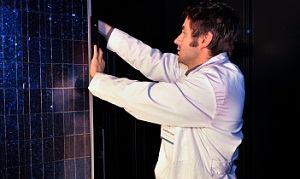New Mexico solar testing lab may help speed certification of solar
 The newly opened CFV Solar Test Laboratory in Albuquerque, N.M., is an all-in-one testing facility for all ilk of photovoltaics. It can test flat panel, thin film and concentrating PV (CPV) devices and certify them to meet domestic and international requirements.
The newly opened CFV Solar Test Laboratory in Albuquerque, N.M., is an all-in-one testing facility for all ilk of photovoltaics. It can test flat panel, thin film and concentrating PV (CPV) devices and certify them to meet domestic and international requirements.
“Manufacturers can certify products for one country, multiple countries or globally. We offer a ‘one-stop’ shop for manufacturers in order to accommodate their needs, either for one country or globally,” said Martin Plass, senior vice president and general manager of the CFV Solar Test Laboratory.
The facility is jointly owned by an international group of companies including, CSA Group, VDE Testing and Certification Institute, Fraunhofer Institute for Solar Energy Systems (ISE) and Fraunhofer USA Center for Sustainable Energy Systems (CSE).
“The CFV solar test laboratory is unique in that we can certify to both North American and the International IEC [i.e., International Electrotechnical Commission] standards for PV directly through our two joint venture partners, CSA and VDE,” Plass said.
“Other test labs have to go through third parties to get the international certification or cannot offer it at all. This means that manufacturers often have to work with two separate test labs to get both the U.S. and international certification,” Plass said.
Since the facility can certify PV for multiple markets in one location, it can reduce the amount of time needed to certify the products for multiple countries and at a lower cost.
Testing of PV at the facility will run between 3 months to six months, Plass said.
“The damp heat test alone takes 6 weeks (1,000 hours) to complete, so with the required pre- and post-tests and the certification and order processing time required, it is about 3 months. Thin film has a lengthy light-soaking test, which typically extends the test time by another month, so that is more likely a 4-month process,” he said.
The facility can also offer advanced testing, helping manufacturers better understand real-world stresses on their modules.
“As examples, we can combine UV-light and damp-heat tests or apply mechanical loads at an angle or at freezing temperatures,” Plass said.
The 25,000-square foot indoor lab includes climate chambers for thermal cycling and humidity freeze-up of panels, a solar simulator and a five-acre outdoor testing area with single and two-axis trackers for accelerated light soaking and CPV testing, according to a press release.



